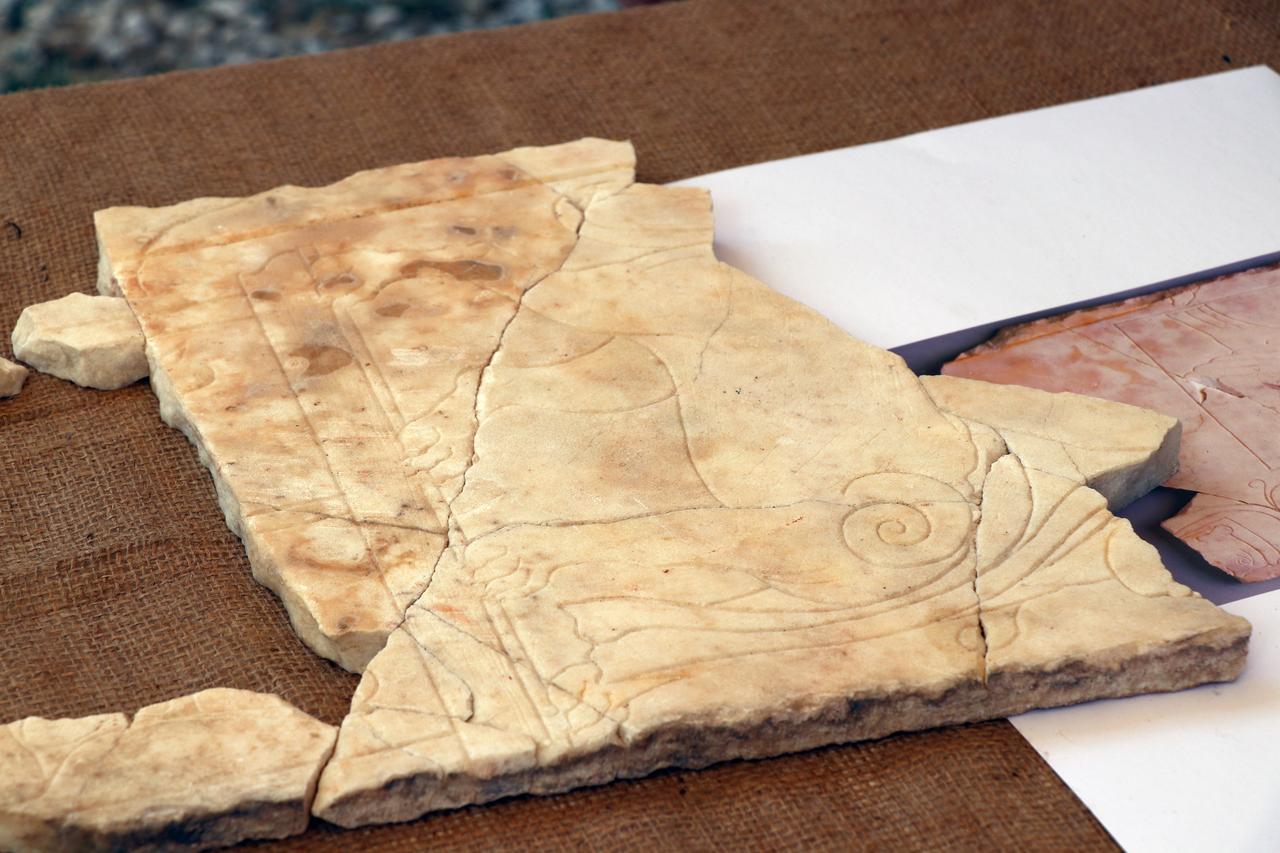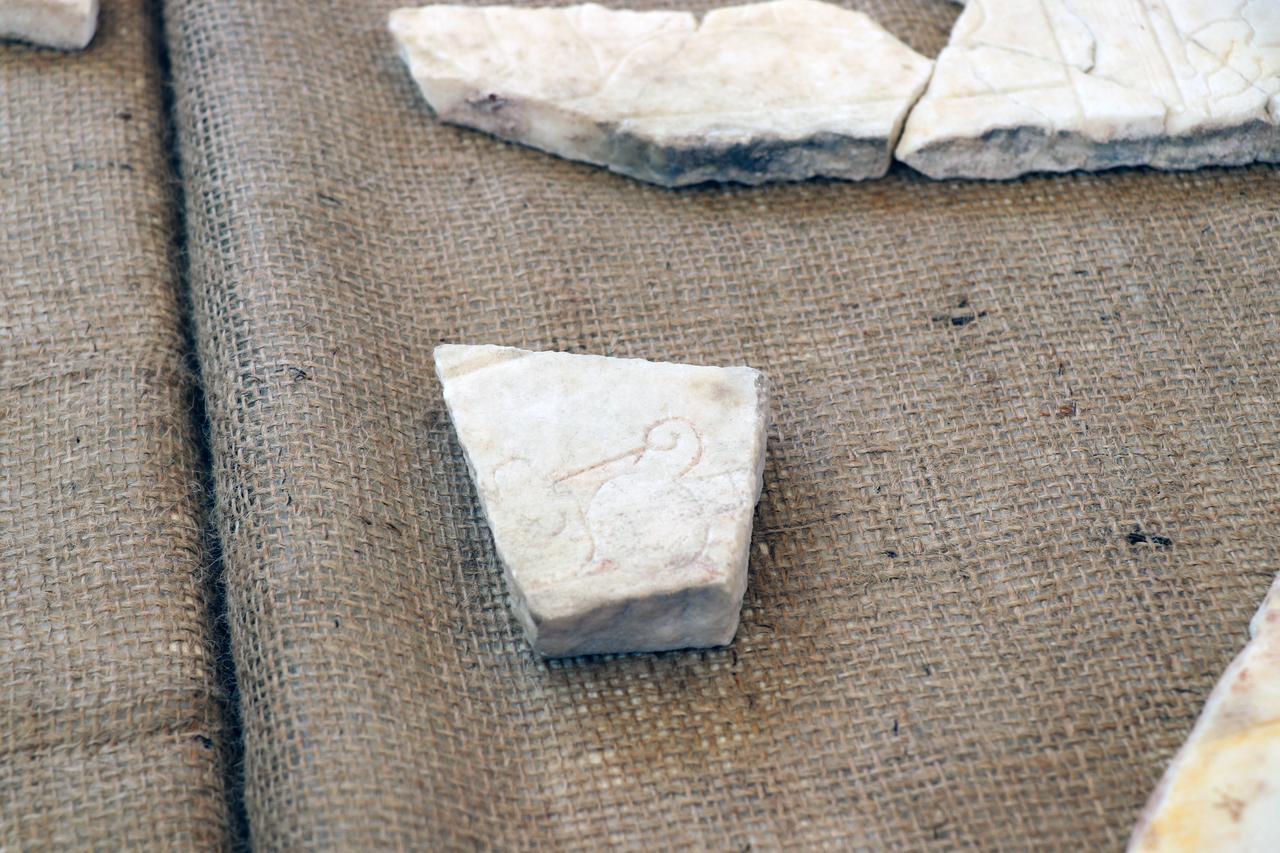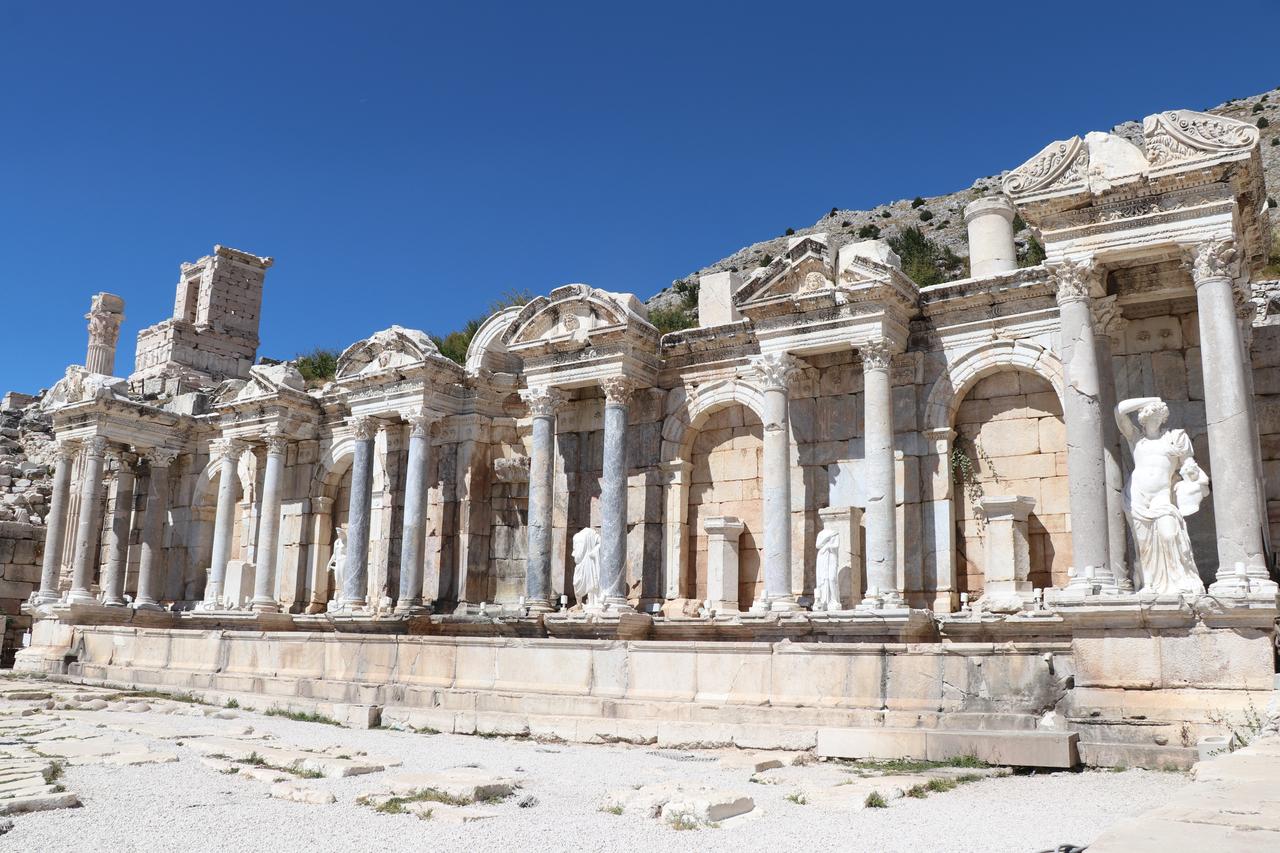
Archaeologists at the ancient city of Sagalassos in Burdur's Aglasun district announced on Saturday that an Egyptian god Tutu figure unearthed in a Roman-era bathhouse was carved using engraving techniques into slabs made from Afyon marble.
Excavations continue at the ancient city of Sagalassos, established on the slopes of Akdag mountain, with the first settlement traces dating back 12,000 years.
The ancient city is on UNESCO's World Heritage Tentative List, and excavations that began in 1989 have uncovered artifacts that shaped history.
One such artifact is the sphinx-god Tutu figure found in a bathhouse built during the reign of Roman Emperor Augustus.

Archaeologists re-examined relief slabs uncovered in 2004 in the north frigidarium (cold space) of the Bath-Gymnasium.
Figures carved into marble slabs using engraving techniques were determined to belong to an Egyptianized decoration program.
The scene, centered on sphinx-god Tutu, depicts Horus representing royal authority and Sobek representing the power of the Nile.
The composition reflects themes of divine kingship and protective powers.

Excavation director and Bilkent University Archaeology Department head Professor Peter Talloen told state-run Anadolu Agency (AA) that during the Roman period, Sagalassos established connections with Egypt through trade routes.
Talloen said they encountered Egyptian influence in decorations used in the city, noting, "We re-examined the slab uncovered last year. This scene carved into Afyon marble sheds unique light on the decoration program of sacred spaces dedicated to Egyptian gods outside the land of the Nile."
Talloen said Sagalassians exported ceramics, wine and agricultural products to Egypt, while bringing back fish species and cultural influences to Anatolia. He emphasized that the marble slab with the Tutu figure stands out as one of the rare examples of Egyptian influence in Anatolia.
"No other example of this iconography is known outside Egypt. The Sagalassians did not worship Egyptian gods; they only used them for decorative purposes," Professor Talloen said.
Talloen said they examined the marble slab and determined it belongs to the Afyonkarahisar region, adding that it was clearly determined the marble slab did not come from Egypt.